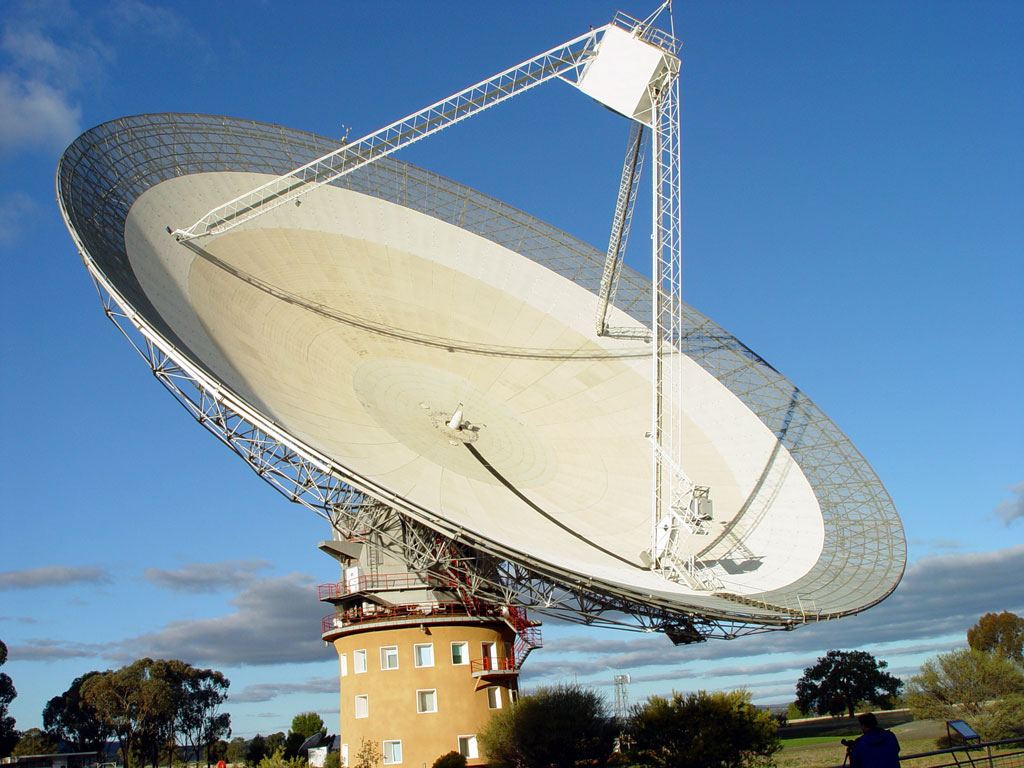
Previous -- Start Page -- Next
The afternoon sun lights up the dish of the Parkes Radio Telescope. The innermost section is 17 meters in diameter and is made of precision aluminum plates for wavelengths down to 7 mm. The next section of perforated plates is 44 meters in diameter and is for 3-10 cm wavelengths. The outermost section is 8 mm mesh for the longer wavelengths (about 21 cm to 75 cm) and its surface is accurate to a millimeter or so. The counterbalance is 450 tons so the total weight above the tower is 1000 tons. The telescope slews at a maximum rate of 12 degrees per minute.
The Parkes Radio Telescope is famous for its role in relaying the TV signals from the Apollo 11 mission. The approximately first nine minutes of the first moon walk were relayed by Goldstone (California USA) and Honeysuckle Creek (outside of Canberra, Australia) but they were of poor quality and inverted. When Houston got the Parkes signal they chose that feed for the rest of the 2.5 hour moonwalk.
